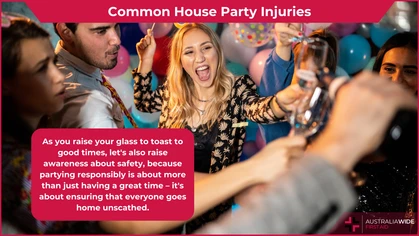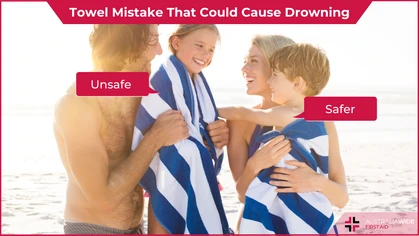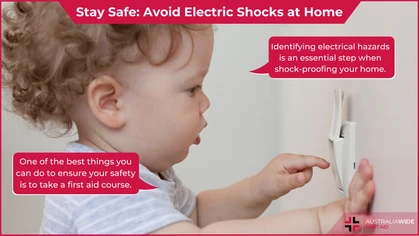How to Stay Safe at the Snow

Danger
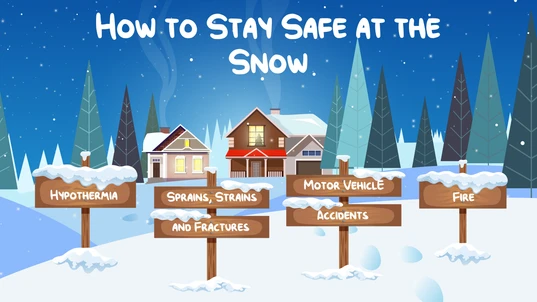
Winter is well and truly upon us, and many people are taking advantage by heading to the snow. Though the snow provides a great opportunity to enjoy the outdoors, it does pose its own unique risks. It's important to know these risks to safeguard your wellbeing.
The snow is not all fun and games. It does pose an environmental hazard and cause many problems and even death to Australians. The four common injuries that occur during winter are hypothermia, snow sports injuries, motor vehicle accidents and house fires. More Australians die in the winter months than in summer months. The very young and the very old populations are most vulnerable during winter.Introduction
It is the month of June and winter is well and truly upon us. There is always much excitement in the air about the snow and all the fun things to do in it. Children are absolutely enthralled and winter might perhaps be the only time of the year they forget those iPads and video games to get out of the house and have some real playtime outside under the sun. However, the snow is not all fun and games. It does pose an environmental hazard and cause many problems to Australians. Common injuries in the snow include sprains and fractures from falls while snowboarding or other activities. Statistics show that sports injuries peak during the winter season from May till July. The Australian Institute of Health and Welfare stated that more Australians die in winter than in summer months as the very young and the very old are vulnerable in winter and susceptible to pneumonia and other circulatory system diseases. Today, we are going to look at 4 common injuries that occur during winter. It is important to be alert and have knowledge of these situations to be able to take actions to avoid getting in these circumstances or to protect yourself if you ever find yourself in one.Hypothermia
Hypothermia is a medical term for abnormally low body temperature. NSW Health defines it as a condition that occurs when body temperature falls to below 35 degree Celsius. Hypothermia can be developed with long exposure to temperatures below 10 degree Celsius which is not uncommon during winter. Signs and symptoms to look out for:- Shivering: This is the first sign to look for as it is the body’s automatic defence to warm itself in the cold temperature
- Shallow breathing
- Weak pulse
- Confusion
- Drowsiness
- Slurred speech
- Dressing warmly in layers.
- Stay as dry as possible.
- Listen to the weather forecast and stay updated since the weather is unpredictable.
- Ensure adequate heating at home, especially for the elderly.
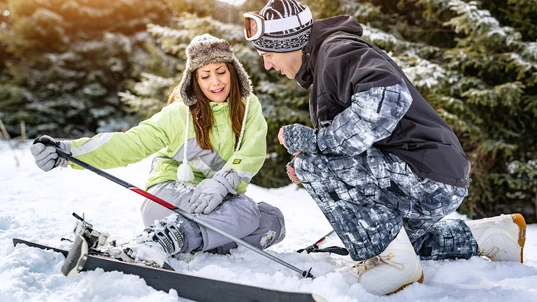
Muscle sprains and strains are common snow sports injuries. It is caused by overexertion and increased pressure on the muscles.
Sprains, Strains and Fractures
Bone fractures and muscle sprain are the most common snow sports injuries. Exercising in alpine environments puts extra pressure and demands more from the body. Most alpine sports injuries happen on overexertion when one pushes his body to its limits. This can be true for other sports as well. Most snow sport injuries could have been prevented. Other injuries to the muscles and ligaments on the knees, shoulders and wrists are sustained from falls when snowboarding or skiing. Prevent snow sport injuries by:- Having proper equipment such as a helmet to protect your head from any head injury.
- Learn how to fall with the ski. Don't try to get up while you are still sliding. Wait until you stop before you attempt to get up.
- Don’t overexert yourself until you are exhausted. Make sure to rest regularly to avoid fatigue-related injuries.
- Cold muscles, tendons and ligaments are susceptible to injury. Spend a good amount of time doing proper warm ups and stretching.

Black ice is a dangerous surface to drive on. Stopping on black ice takes nine times longer than stopping on a normal road surface.
Motor Vehicle Accidents
Even after the snow has been cleared from the road, the surface of the road may still have a thin layer of ice. This makes driving in snowy conditions difficult and sometimes dangerous. There are a few factors that cause accidents to happen in such terrain. Factors include:- Slippery roads: The road may be wet and have low skid resistance and friction due to the snow, ice and water. So, if your car goes into a skid, it is advised to release the brake and only gently apply the brakes after the skid slows down.
- Poor visibility: White-out conditions. Travel during daylight since it gets difficult to judge distances in snow at night.
- Black ice: It is a thin sheet of ice that forms on the road that makes it a dangerous surface to drive on.
- Not having the right car tyres: The standard summer tyres are not suitable. It is essential to get those winter tyres with more grip to drive in ice and snow for safety.
- Check for black ice warnings.
- Drive slowly and avoid icy conditions.
- Check that your car is in good working condition.
- Carry a first aid kit in your car to be prepared for accidents that can happen anytime and anywhere.
- In alpine parts of Australia, drivers are required to have snow chains in their tyres.
Fire
Half of all fires in the house start in the kitchen and more than 40% of all deaths accounting to fire occur in winter. The reason for this is primarily because of faulty electrical products. During winter, we use a lot of electrical appliances to keep us warm, such as electric blankets and heaters just to name a few. If these electrical appliances become faulty, they can overheat, cause an electrical shock or start a fire. Keep your family safe and prevent fires by:- Changing the batteries and testing your smoke alarm every year. If you’ve had your smoke alarm for more than a decade, it is time to change it.
- Never using the gas stove as a room heater.
- Never leave candles unsupervised and keep them away from any combustible materials such as clothing.
- Use one appliance per power point. Heaters use a lot of power and they may overload the supply and cause a fire.
- Avoid using charcoal-burning stoves in the house since burning charcoal produces large amounts of carbon monoxide and it only takes a small amount of it to cause carbon monoxide poisoning and even death.
- Always check that your gas heater is working well. It should be serviced every 2 years by a licensed gas fitter.
- Check that your electric blanket is working properly and has not been placed on a recall list.
Originally published at
https://www.australiawidefirstaid.com.au/resources/how-to-stay-safe-at-the-snow
as part of the Australia Wide First Aid Articles Library



